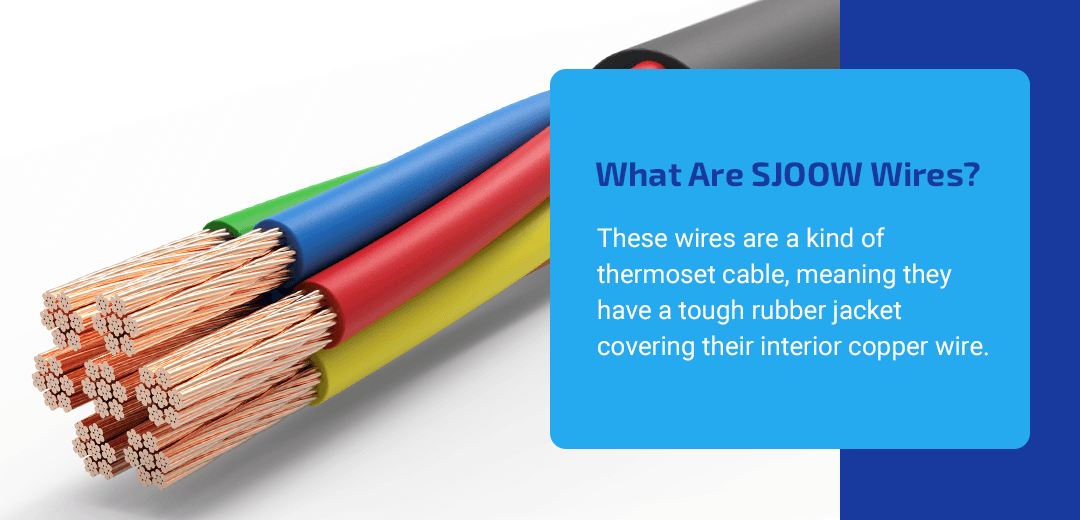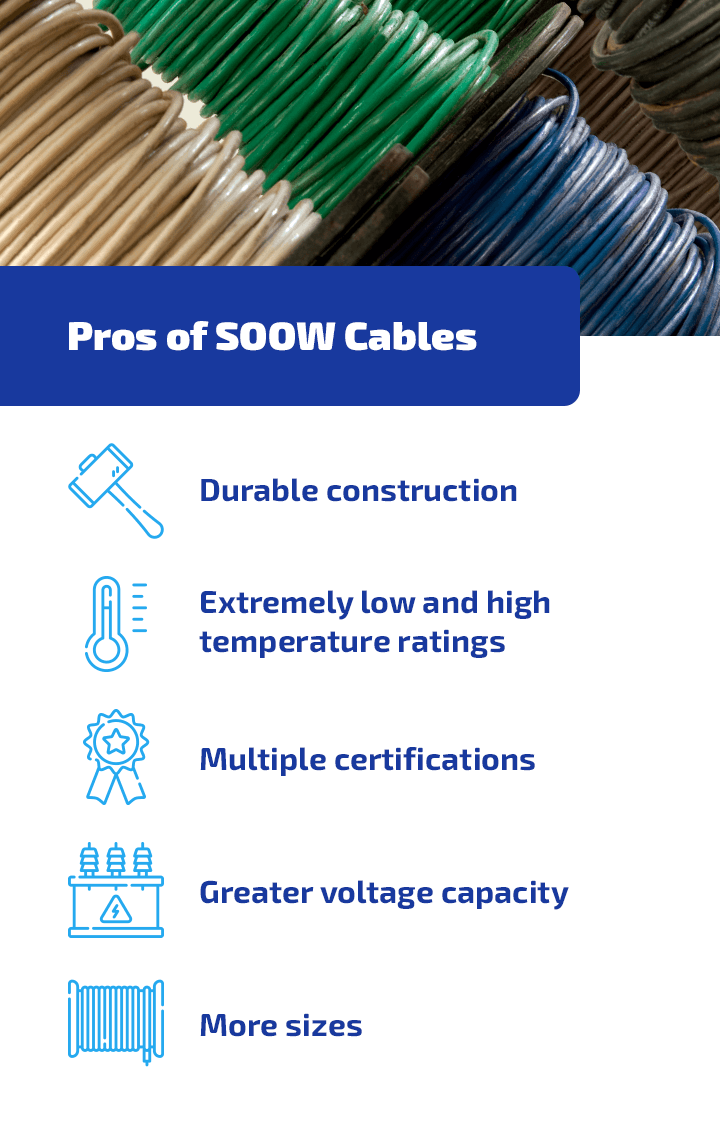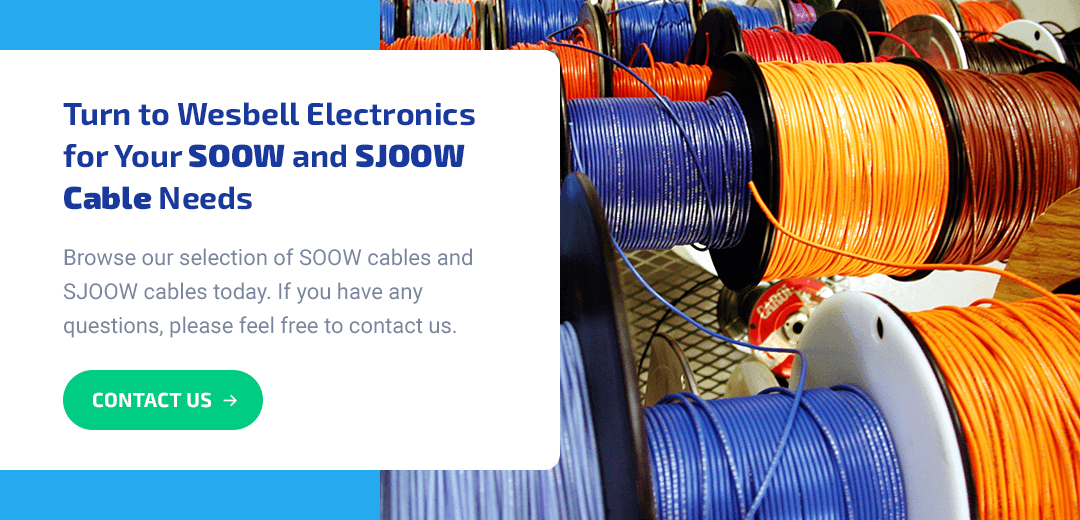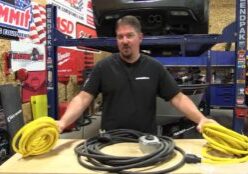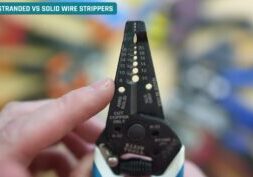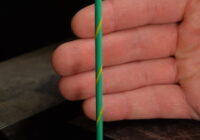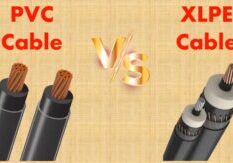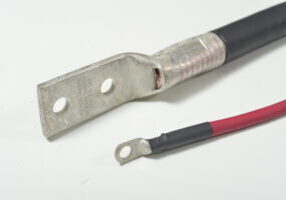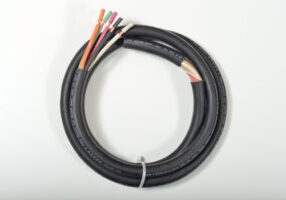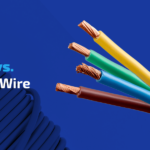
Jul 11, 2023
SJOOW vs SOOW Wire
SJOOW and SOOW wires are some of the best multiconductor portable cords available to electricians on the market today. While these wires are both incredibly tough and suitable for multiple applications, they differ in significant ways. If you’re on the market for cables for a project, you may want to know more about these wires so you can pick the best one for your needs.
Learn more about what SOOW and SJOOW wires are and the primary differences between them. You might also be interested in learning more about their main applications and the pros and cons of each type of wire.
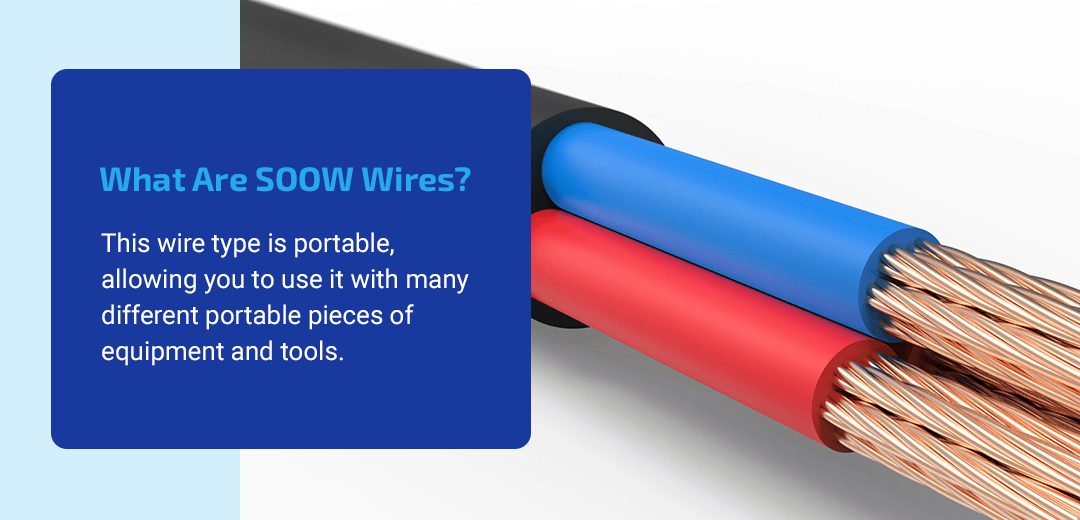
- What Are SOOW Wires?
- What Are SJOOW Wires?
- Similarities Between SOOW and SJOOW Wire
- Differences Between SOOW and SJOOW Wire
- Pros & Cons of Each Wire
What Is SOOW Cable?
An SOOW cable is a multi-conductor power cable, commonly used as a power supply cable, made from flexible copper conductor strands. This wire type is portable, allowing you to use it with many different portable pieces of equipment and tools. A cable’s size can vary, with the number of conductors inside the cable ranging from a minimum of two conductors and a maximum of 40. Each letter in SOOW stands for particular cable properties:
- S: S stands for service, marking it as a service cable.
- OO: The OO portion refers to the cable’s oil-resistant insulation and its oil-resistant jacket.
- W: Finally, the W stands for water resistance.
Combined, all of the above properties make up an SOOW wire. These cables feature a 600 volts rating and are made for standard commercial applications and heavy-duty industrial applications. SOOW wire can withstand temperatures ranging from minus 40 degrees Fahrenheit to 200 degrees Fahrenheit. The tough rubber jacket surrounding the copper wires features a chlorinated polyethylene elastomer (CPE) jacket, making it resistant to environmental stressors like heat, sun, oil and water. As a result of this heavy-duty construction, you can safely use these cables outdoors and indoors, including even tough industrial zones. In some SOOW cables designed for light applications, you’ll find a thermoplastic elastomer (TPE) jacket, but this material does not offer oil resistance or operation in high temperatures.
Applications of SOOW Wires
Since SOOW wires are highly durable and impermeable, many electricians and contractors use them for both interior and exterior projects. These portable cables are well-suited for mobile equipment and tools, as they can provide a steady supply of power while the equipment moves around.
Companies regularly employ them for industrial applications, including:
- Motors
- Cranes
- Processing machinery
- Construction equipment
- Mining equipment
- Locomotives
- Dockside power
- Oil manufacturing
Alongside their industrial uses, they can also work for residential and commercial applications including the following:
- Portable lighting systems
- Portable tools
- Remote control wiring
- Portable appliances
- Battery chargers
- Fire alarms
Since SOOW cables are compatible with several applications, they’re a very popular wire type and perfect for many projects.
What Are SJOOW Wires?
SJOOW cable is a type of portable power cord often used as an extension cord, delivering power to various tools and equipment. The addition of the ‘J’ to SOOW simply adds the word “junior”. It refers to cutting back the voltage rating of the wire from 600 volts for SOOW to 300 volts for SJOOW, making it a more cost-effective option for less demanding applications.
We carry SJOOW cables in several different configurations, with anywhere from two to four conductors. Each has a chlorinated polyethylene (CPE) jacket and premium ethylene propylene diene monomer (EPDM) insulation. Conductors are made of bare copper wires.
SJOOW wires are very similar to SOOW wires in that they are also a stranded bare copper portable cord. These wires are a kind of thermoset cable, meaning they have a tough rubber jacket covering their interior copper wire. The primary properties of an SJOOW wire are:
- S: S refers to service, meaning it’s a service cable.
- J: The J stands for junior, meaning this wire has a lower voltage rating compared to an SOOW cord.
- OO: The OO means the wire comes with oil-resistant insulation and an oil-resistant jacket.
- W: As with the SOOW type, the W stands for water resistance.
Unlike SOOW portable cords, SJOOW cords are rated for 300 volts, with the J in SJOOW referring to its junior status and lesser voltage rating. They also feature a CPE jacket, like SOOW wires, meaning they’re incredibly durable and acceptable for both indoor and outdoor projects.
Applications of SJOOW Wires
Like SOOW wires, SJOOW wires can be safely used indoors and outdoors due to their protection from water and oil. Due to their high level of protection, they’re appropriate for several applications.
This heavy-duty construction helps SJOOW cord stand up to tough environments, with resistance to water, oil, moisture, chemicals, acids, sunlight and abrasion. It can be twisted and turned, too, with good tensile strength and flexibility. SJOOW works in temperatures from -40 to 90 degrees Celsius, making it appropriate for indoor and outdoor use.
Many contractors rely on SJOOW cables to power their portable tools and equipment. People commonly use them with small motors and machinery, as well as mobile appliances. Additionally, they’re compatible with heavier industrial projects and larger construction equipment and tools, as long as the tools or equipment don’t require more than 300 volts. Like SOOW wires, the durability of SJOOW wires and their tough thermoset jackets make them perfect for messy applications, such as in oil processing or mining.
These cables can be used for hazardous applications that would normally harm other cords. The sturdy jacket protects SJOOW cables from dangerous acids and chemicals. Since many of them can work underwater, they’re great for marine projects, such as running submersible pumps or powering boat docks. You might also find them employed at IT installations and data centers. Additionally, many companies that rely on movable or decorative lighting systems utilize SJOOW cables to power them.
Similarities Between SOOW and SJOOW Wire
Both SOOW and SJOOW wires are classified as service cords, meaning they can be used for various construction and industrial equipment applications. These cords’ interiors have stranded multiconductor cables designed to conduct electricity and be very flexible. They also rely on synthetic rubber to insulate the stranded multiconductor cables and protective thermoset jackets to stand up to environmental dangers and mishandling.
Due to their similar construction, SOOW and SJOOW wires also share many properties, such as resistance to chemicals, ozone, oil, sunlight and abrasion. Their insulation and jacket also allow them to deliver electricity safely even when they’re submerged in water. Their heavy-duty construction makes it so they’re rated from negative 40 degrees Celsius to 90 degrees Celsius.
Differences Between SOOW and SJOOW Wires
When you need to use a portable power cord, it’s important to know your voltage requirements. The most notable difference between the two types of wires is the voltage ratings. The difference between SJOOW and SOOW cable is in the missing “J,” which refers to the voltage. SOOW cords can handle more voltage, going up to 600 volts. SJOOW wires can only handle a maximum of 300 volts.
SOOW cable has the same construction but can support greater electricity demands with up to 600 volts. It also comes with more conductors — up to 40 — and has larger diameters. Anything over a 4 conductor cable is automatically SOOW, as well as anything bigger than 10 AWG. The 10, 12, 14, 16 and 18 AWG cables all come in the SJOOW version. You can only get the 2, 4, 6, and 8 awg cables in SOOW though because it requires more power. This cable also comes in a yellow-jacketed Super Vu-Tron material, which is much more expensive but provides greater flexibility and durability.
Since SOOW cables are rated for higher voltage, they’re compatible with more applications that an SJOOW wire may not be able to handle. For example, an SOOW wire is often compatible with industrial machinery, like hoists, cranes and construction equipment, while an SJOOW wire may not be rated for the voltage to handle them. Since SOOW cables are compatible with more applications, manufacturers usually offer them in a wider range of conductor counts and gauges than SJOOW cords. Price-wise, SJOOW wires tend to cost less than SOOW cords since they don’t have as many applications.
Pros and Cons of Each Wire
As you decide between SJOOW and SOOW portable cords, you may be interested in knowing some of the primary pros and cons of these wires. While both of these cables can be very useful for several applications and feature durable construction, each type can be more appropriate in certain situations. Being aware of these cords’ main advantages and disadvantages can help you make the right wire choice for your next project.
Find out more about the main pros and cons of these two primary kinds of cables.
Pros and Cons of SOOW Cables
Many electricians and individuals turn to SOOW cables due to the many advantages they can offer. For example, some of the top benefits of these cables include their multiple certifications, durable construction and high voltage capacity. They also function under extremely low and high temperatures and come in many sizes. Understanding their primary advantages and their potential drawbacks can help you know if an SOOW cable is right for your needs.
The pros of SOOW cables include:
- Durable construction: Manufacturers craft SOOW cables with tough materials and a durable design so you can safely use them indoors and outdoors. This cable’s outer jacket is particularly tough, as it won’t break or tear no matter how much it’s mishandled, thrown around or stepped on. It’s also extremely flexible despite its strength, which makes installation and storage easier.
- Extremely low and high temperature ratings: Since SOOW cables have low and high temperature ratings, they can handle almost any job. As long as you stay between minus 40 Celsius to 90 Celsius, an SOOW cable can perform to the best of its ability.
- Multiple certifications: SOOW cables usually come backed up by several certifications, ensuring you can trust them for many different applications. SOOW cables are usually UL listed and CSA certified to work indoors and outdoors. They can also feature industry-specific certifications, such as for the Restriction of Hazardous Substances (RoHS), the Occupational Safety and Health Administration (OSHA), the National Electrical Code (NEC) and the Mine Safety and Health Administration (MSHA). Some companies even offer flame-tested SOOW cables, verifying their flame resistance.
- Greater voltage capacity: One of the biggest advantages of SOOW cables is their higher voltage capacity compared to SJOOW cables. Due to their higher voltage rating, they can work with a wider range of applications and deal with higher-power tools and equipment.
- More sizes: Compared to SJOOW cables, SOOW cables come in more size options. SJOOW cables only come in sizes from 10 American Wire Guage (AWG) to 18 AWG. In contrast, SOOW cables are available in size options ranging from 2 AWG to 18 AWG.
Though you can find several advantages of SOOW cables, you might want to avoid using them in certain applications. Obviously, if you need more than 600 volts, you’ll want to go with cords rated for higher voltage capacities. Additionally, you might want to choose an SJOOW cable instead of an SOOW cable to save on costs if you don’t need it for applications above 300 volts. Since SOOW cables tend to have a larger overall diameter than SJOOW, they might be too big for certain applications.
Pros and Cons of SJOOW Cables
SJOOW cables come with many similar advantages compared to SOOW cables. They’re made of abrasion-resistant and durable materials to ensure they last a long time and stand up to dangerous factors. They’re also crafted for flexible applications and can have multiple certifications, making them perfect for projects in several industries. Alongside their advantages, you may want to know about their drawbacks to ensure you pick the right cord for your next project.
Here are some of the top pros of SJOOW cables:
- Tough constructions: Manufacturers make SJOOW cables to stand up to extreme temperatures ranging from negative 40 Celsius to 90 Celsius, reaching CSA certification and becoming UL listed. They’re also often outfitted with outer jackets with a high tensile strength to protect against people throwing, pulling and dragging them around. Some SJOOW cables even come with materials making them safe for water immersion and resistant to flame.
- Abrasion resistance: Another great advantage of SJOOW cords is their outer thermoset jacket’s ability to resist abrasion. Since workers tend not to handle electrical cables with a lot of care, these cords’ abrasion resistance is invaluable, as you want them to function properly once they’re finally installed and last for a long time afterward.
- Multiple certifications: Like SOOW cables, SJOOW cables can come with various certifications, showing their ability to work in different industries. For example, OSHA, MSHA, RoHS and NEC certifications are all common. Additionally, you can find cables meeting Federal and Military Specification J-C 850B, as well as those rated as GreenSpec environmentally-preferred products.
- Flexible applications: Since SJOOW cables work in tough environments, feature durable designs and can be certified for multiple kinds of work, they’re some of the most flexible kinds of cables you can find. Additionally, people can employ them indoors or outdoors, making them appropriate for many different applications.
Alongside the many advantages of SJOOW cables, they may also come with some drawbacks that could affect your project. The most common reason buyers choose to select an SOOW cord over an SJOOW cord is an SJOOW cord’s inability to handle voltage over 300. If your project needs a cord that can handle more than 300 volts, the limited capacity of SJOOW cables are a major drawback.
Since these junior cables come in limited sizes ranging from 10 AWG to 18 AWG, they can only fit in certain applications. Typically, SJOOW cables come in smaller sizes than other common electrical cables. SJOOW cords also offer far fewer conductors than SOOW cords, as SOOW cables come with up to 40 conductors, while SJOOW cables only range from two to four conductors. If your project needs more than four conductors, you’ll want to look for something other than SJOOW cables.
Turn to Wesbell Electronics for Your SOOW and SJOOW Electrical Cable Needs
At Wesbell Electronics, we carry several multiconductor portable cords, with many SOOW cables and SJOOW cables available. For example, we offer several SJOOW cables, like those featuring size 10 AWG wires and two conductors or those with 18 AWG wires and four conductors. We’re proud to offer our cables by the foot so you can choose a length fitting your project’s needs. We also provide free shipping for orders over $500.
Alongside our inventory of multiconductor portable cords, we also provide wire processing services, like stripping and cutting. When you use our services, your crew can start working as soon as they receive their cables. We also have expert representatives ready to help you learn more about a cable’s details and find the right cord for your project’s needs.
Browse our selection of SOOW cables and SJOOW cables today. If you have any questions, please feel free to contact us.

